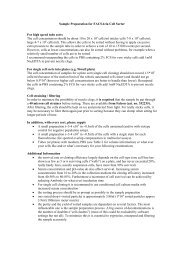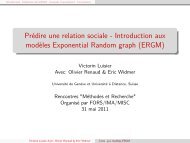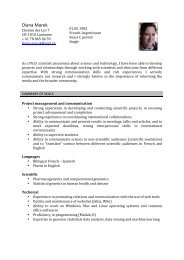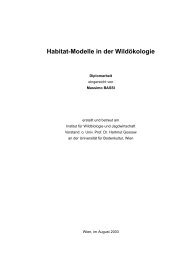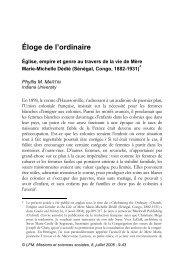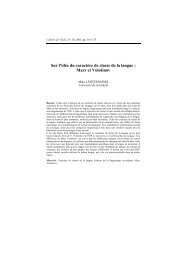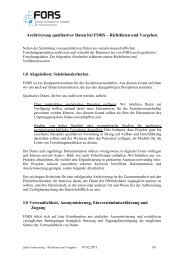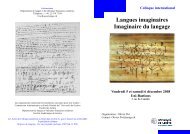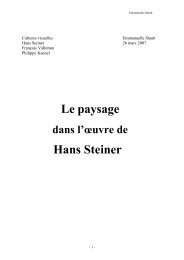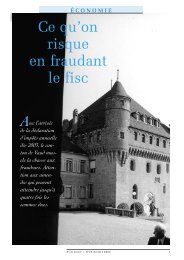conference programme book - European Survey Research ...
conference programme book - European Survey Research ...
conference programme book - European Survey Research ...
Create successful ePaper yourself
Turn your PDF publications into a flip-book with our unique Google optimized e-Paper software.
84 WEDNESDAY 20 JULYthe summer of 2010, the U.S. Department of Defense engaged Service members about the perceived impactson the military if Don’t Ask, Don’t Tell (the law banning openly gay individuals from military service) wererepealed. Westat supported this effort with numerous data collecon acvies, including an online surveywith a sample of 400,000 Service members...2.19.3 Combining qualitave and quantave survey data to explore public percepons of medical researchN. Allum 2 , P. Stoneman 1 , P. Sturgis 11 University of Southampton, United Kingdom; 2 University of Essex, United KingdomThe primary method by which social sciensts describe public understandings of science is to display marginalsin quantave variables and to ulise mulvariate techniques to explain the variaon observed. In this paper,we propose a different approach which could complement quantave based descripons. By delving intothe images and key concepts people make use of when thinking about science and scienfic issues, we arguethat greater insights can be offered on the cognive and psychological processes at work. This approach ismade possible by using public understanding of science data from the 2010 Wellcome Monitor dataset whichin addion to standard quantave variables, contains open ended quesons. By focusing on the verbamresponses generated from such quesons we use the ALCESTE soware to analyse any underlying paerns inthese responses...2.20 Analysis of Immigraon in Europe ITo be held on July 20, 2011 from: 11:00 to 12:30, in room 315.1.Coordinated by: Mariya Aleksynska - CEPII, France2.20.1 Ethnic Identy and Labor-Market Outcomes of Immigrants in EuropeA. Bisin 2 , E. Patacchini 0 , T. Verdier 3 , Y. Zenou 11 University of Stockholm, Sweden; 2 NYU, United States; 3 PSE, FranceThe aim of this paper is to study the relaonship between ethnic identy and labor-market outcomes of non-EU immigrants in Europe. Using the <strong>European</strong> Social <strong>Survey</strong>, we find that there is indeed a penalty to be paidfor immigrants with a strong identy. Being a first generaon immigrant leads to a penalty of about 17 percentwhile second-generaon immigrants have a probability of being employed that is not stascally different fromthat of naves. However, when they have a strong identy, second-generaon immigrants have a lower chanceof finding a job than naves. In terms of ethnic identy, we find that speaking a language at home differentthan that of the majority is always harmful in terms of employment. A strong aachment to religion has alsoa negave impact on employment while a strong aachment to tradions and customs does not seem to playa significant role...2.20.2 Locaon choice of immigrants in Belgium 1990-2007I. Ruyssen 1 , G. Rayp 1 , H. Jayet 2 , N. Ukrayinchuk 31 Ghent University, Belgium; 2 University Lille 1, France; 3 Université Lille 2, FranceThis paper analyses the locaon choice of immigrants living in Belgium between 1990-2007 and aims at separangthe so called ”network effect” from other locality-specific characteriscs. The Belgian populaon registerconstutes a rich database of migrant inflows and stocks broken down by naonality and age cohort, whichallows us to disnguish the immigrants of working age. Using these data, we empirically explain the numberof immigrants arriving in each of the 43 governmental districts as well as the 588 municipalies. The networksize is idenfied by the number of previous arrivals in the same locaon, whereas other local, geographicallyspecificcharacteriscs – such as the local labor-market condions or the presence of higher-quality amenies



